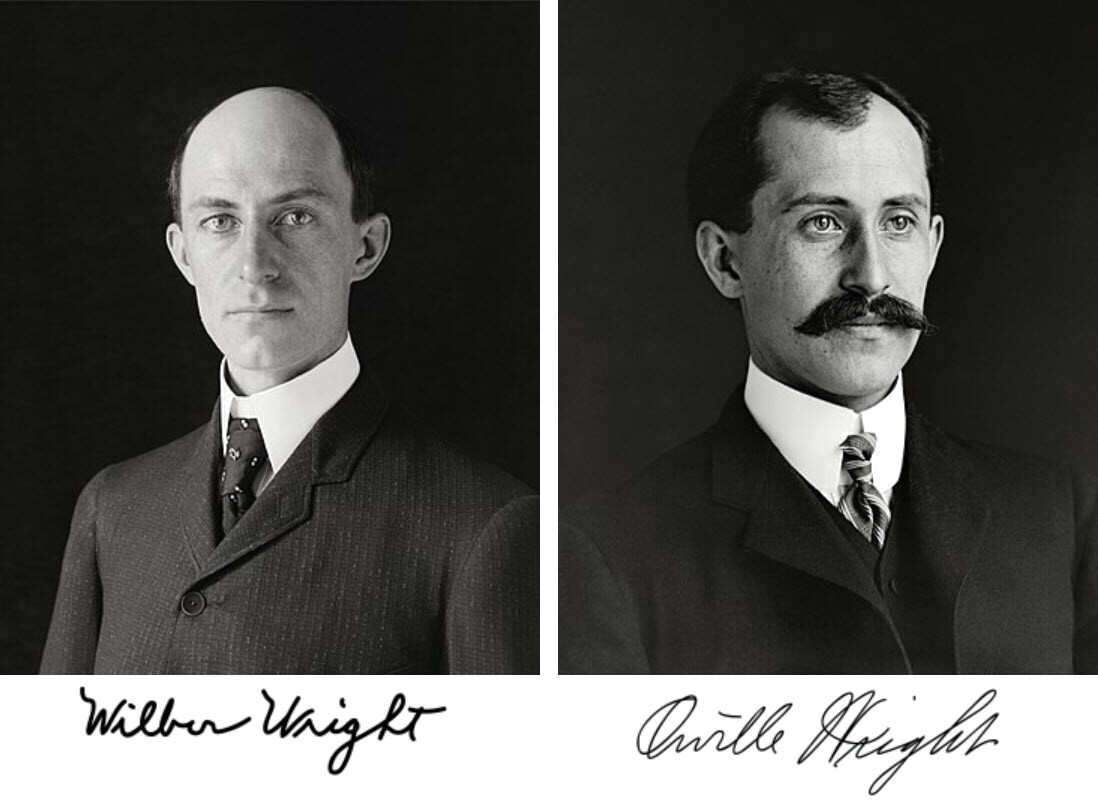Was One Wright Brother Doing Most of the Work With the Whole Plane Thing?

Ask anyone who invented the modern airplane and you’ll get a clear answer: the Wright Brothers. It’s a fact that, even for the most forgetful of us, somehow etches its way deep into our brain, maybe because “Wright Brothers” is such an eminently catchy name. As history tells it, the two blood-sharing fellas were finally able to conquer gravity on the shores of Kitty Hawk, North Carolina. Something that, obviously, took an immense amount of research, fabrication and good old gumption. One suspicion remains in my mind, however.
Not that it was faked, or that planes in general are fake, and are, in fact, large metal mythological creatures kept underground by the government, who we fly in the belly of. Though that would be fun. My doubts here lie with the idea that two brothers produced the plane with equal effort. You’re telling me that Wilber and Orville were both putting in roughly 50 percent of the work on the modern plane? The only thing taking flight here is my eyebrows — in doubt.
Anyone who’s ever worked on a group project knows it’s a rare occasion indeed that every participant is equally involved. At best there’s a genius who does the thinking part and a talented manager who handles scheduling, a handshake agreement to each do what they’re best at. An actual, honest-to-god, perfectly sliced pie chart of labor? It’s rare. Even more so when you bring familial ties into it. This is the stuff bitter estate lawsuits are made of. We all watched Succession.

So, in a quest to answer one single question in my head and to destroy a little bit of a dead man’s legacy, I took to the internet to find out. Unsurprisingly, I found that I’m not the first person to suspect an uneven distribution of labor. It seems that it’s more just something no one wants to suggest or say, in order to let the skeletons of the plane brothers rest in peace. Am I risking a metaphysical haunting by a spurned brother’s ghost by spreading this information? Perhaps. But that’s the sort of journalistic peril that Cracked demands.
According to a Smithsonian piece by author William Hazelgrove sharing a new view of the brother’s joint venture, one discovered during his research for a book called Wright Brothers, Wrong Story, Wilbur deserves most of the credit. Something Hazelgrove drives home with the borderline insulting, passive-aggressive subtitle, How Wilbur Wright Solved the Problem of Manned Flight. According to Hazelgrove, there’s years of records of Wilbur pursuing flight solo, requesting documents to further his research and developing propellers without any Orville assistance. By the time Orville boarded their maybe-plane the first time in 1902, Wilbur had already chalked up hundreds of attempts on his lonesome. Even their father was clearly aware of the brains of the operation, writing to Wilbur, concerned (rightfully) for his safety, “alone, Orville would be crippled and burdened.” Brutal.
So why, then, is everyone of the belief that the plane was developed in a perfectly proportional Orville-Wilbur yin-yang of effort? You may have heard the phrase, “History is written by the victors.” Well, in the absence of a war, it could be adjusted to, “History is written by the person that died last,” which was Orville, who outlived Wilbur by a tidy 36 years after Wilbur died an untimely death to typhoid fever. So he was long gone by the publication of the book The Wright Brothers: A Biography Authorized by Orville Wright in 1943, a book whose title might give you some inkling as to the type of editorial suggestions that were made. Orville is at least noted to be gifted mechanically, but more in the art of repair than the art of innovation.
What might have to hurt most of all? That on the fateful day of the first successful flight, thanks to a coin-flip, it was Orville who lifted off, and starred in the photographic evidence. We see you, Wilbur. We see you.





